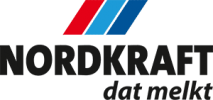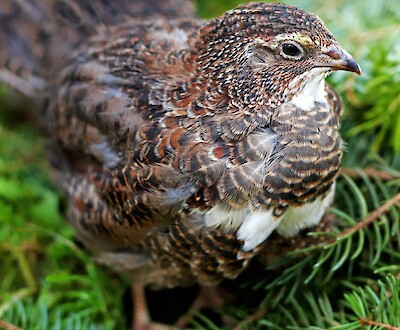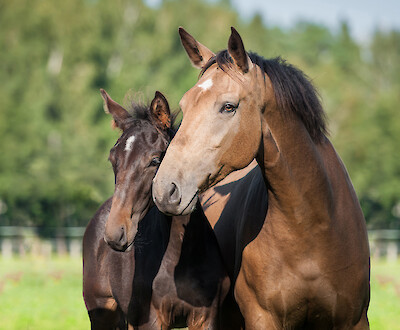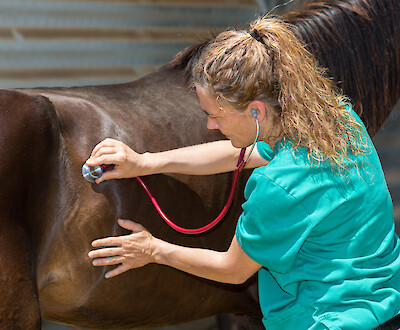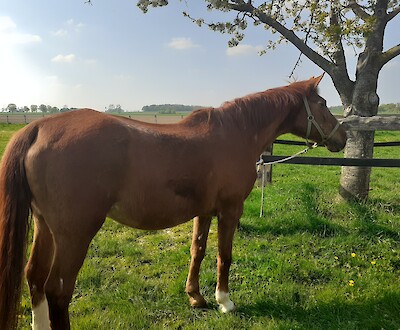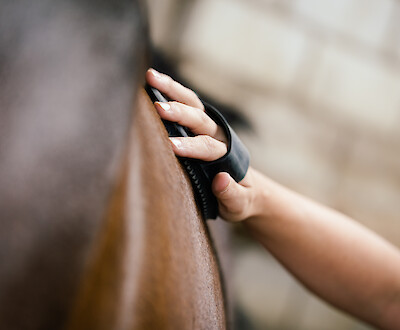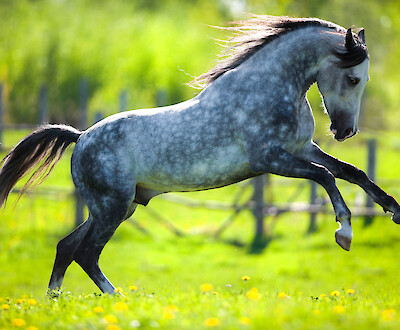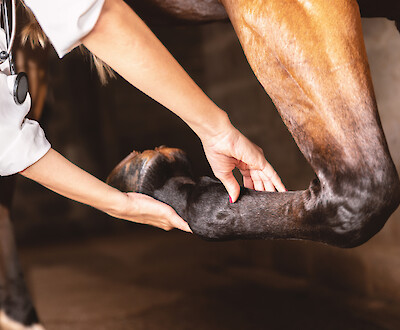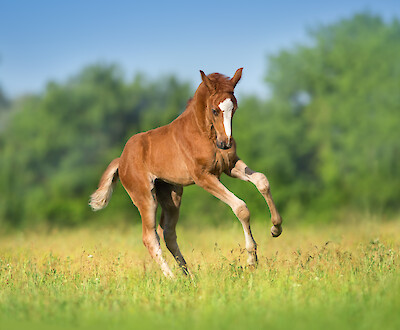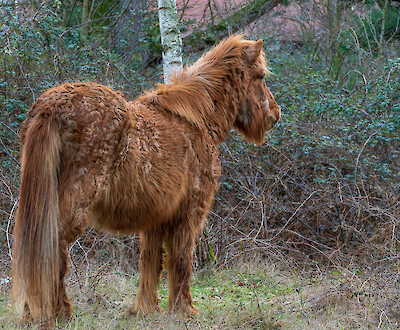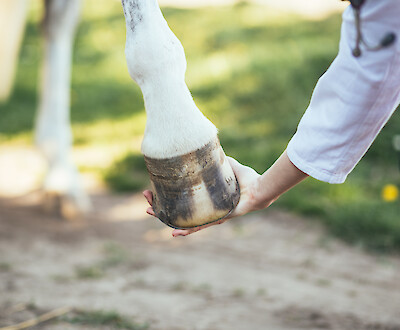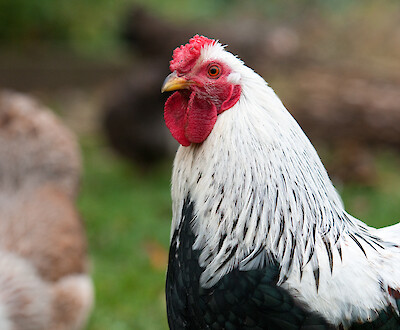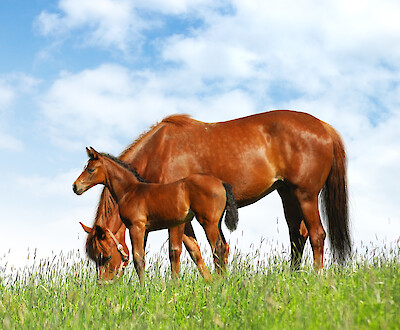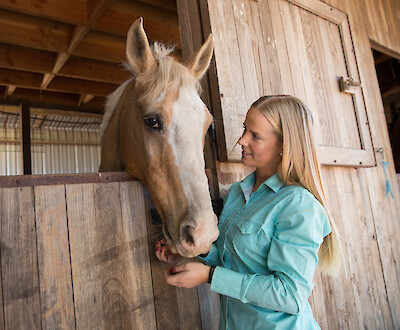Wrong diet, insufficient exercise, unhealthy habits, stress: more and more people today suffer from diseases such as high blood pressure, type 2 diabetes or dementia. Horses are also increasingly affected by so-called diseases of civilisation. One particularly widespread ailment is Equine Metabolic Syndrome (EMS). EMS is a metabolic disorder that is mainly observed in overweight horses. If EMS is left untreated, horses can develop life-threatening laminitis. However, with a quick and consistent change in feed, lots of exercise and sufficient love, EMS can be treated well today.
Long daily marches across barren, nutrient-poor pastures, always in search of fresh fodder - this is how many of the ancestors of today's horses lived. Even after domestication by humans, many equids had to laboriously earn their daily meal as draught and pack animals. It is only in the last few decades that horses have been living comfortably for the most part. Energy-rich feed is often available in abundance and sun-ripened, lush pastures offer nutrients in abundance.
So it is not surprising that more and more horses are struggling with overweight and obesity (adiposity). Energy-rich feed in abundance, insufficient exercise and fat deposits. However, this also lays the foundation for EMS in horses - a modern disease of excess.
Symptoms: Signs of EMS in horses
EMS is not a disease in the strict sense. Rather, it is a complex of different symptoms. Especially characteristic for EMS is the storage of fat above the eyes, on the mane ridge as well as on the neck, shoulders and croup. Affected horses appear (severely) overweight.
In addition to this leading symptom, however, other signs of the disease are usually observed. Depending on the degree of severity and constellation of symptoms, the clinical picture of EMS in horses sometimes differs markedly. The following symptoms are frequently described:
- Muscle atrophy
- stiff movements
- dull coat and hair
- Watery stools
- (heavy) sweating
- increased need for fluids
- increased urination
- Loss of performance
- increased susceptibility to infections
- Fertility problems in mares
The course of EMS in horses varies. Along with insulin resistance, laminitis is the most serious sequelae of EMS in terms of health.
EMS in horses vs. PPID / ECS in horses - What is the difference?
A number of different symptoms can indicate EMS in horses. However, many of the signs are also indicative of a similar disease: Pituitary Pars Intermedia Dysfunction (PPID), better known as Equine Cushing Syndrome (ECS). The symptoms of both metabolic disorders sometimes overlap. For this reason, EMS and "Cushing's" are difficult to distinguish, especially in the early stages. PPID / ECS is a hormonal disorder that is especially common in older horses. Due to the similarity of both diseases, you should definitely consult a veterinarian for a final diagnosis.
- You can find out more about PPID and ECS in our guide "Equine Cushing's Syndrome in horses: causes, symptoms, treatment".
Definition and causes of EMS in horses
One of the most common and at the same time most visible triggers of EMS in horses is overweight (obesity). The cause of obesity is often incorrect feeding or incorrect posture of the horse with too little exercise. Only a look into the physiology of horses provides information about the processes that can cause the symptom complex:
- After the ingestion of starch- and sugar-containing feeds, the blood sugar level in horses rises. As a result, their body secretes insulin. The hormone serves to transport the sugar molecules (glucose, monosaccharides or simple sugars) from the blood to the organs that need energy. These include the muscles and liver, but also the fat deposits. The blood sugar level drops again as it is transported from the blood into the cells.
- Horses that have been fed too much energy over a longer period of time develop overweight and become obese. The interaction between blood sugar and insulin is severely disturbed. The reason: the fat deposits that these horses have developed are not passive storage tissues for energy. Instead, they are hormonally active and release messenger substances. These cause the cells to react less sensitively to insulin. As a result, the blood sugar level does not drop to the same extent as in healthy horses.
- The organism of these horses nevertheless tries to lower the blood sugar by producing more insulin. However, this is often unsuccessful. As a result, affected horses develop a resistance to insulin. This insulin resistance is therefore a clear indication of EMS.
Are certain breeds of horses particularly affected?
In principle, any horse can suffer from EMS. However, there are horses that suffer from the symptom complex particularly often. These include robust horse breeds, such as Icelandic horses or pony breeds like Shetland ponies. The reason for this is that these breeds are predominantly used to low-energy feed. They therefore require a low-energy diet
However, horses that are basically light feeders and regularly eat too much feed are also at risk. If they lack exercise and are subsequently overweight, the diagnosis of "EMS" is often not far away.
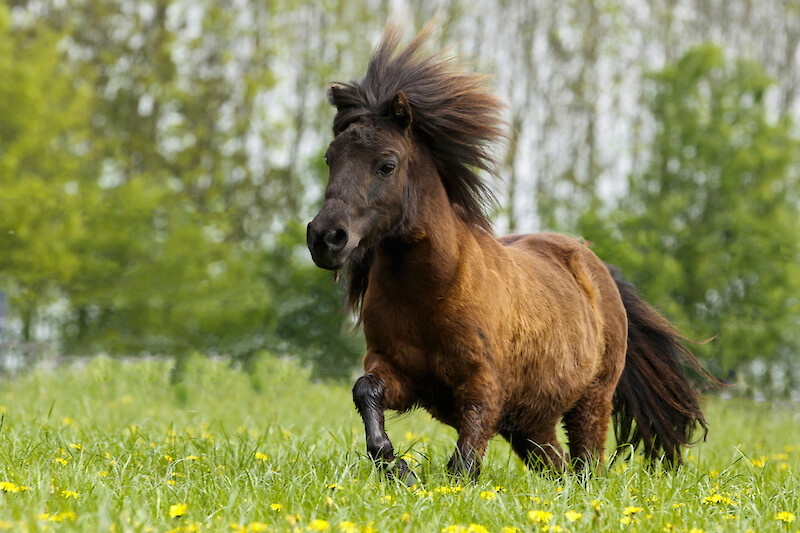
Treatment of EMS in horses
The therapy of horses with EMS is mainly aimed at weight loss. A therapy with two focal points has proven to be particularly effective:
- Switching to a grain-free, starch- and sugar-reduced diet.
- Sufficient exercise and regular training.
Changeover to a grain-free, starch- and sugar-reduced diet for your horse
The most important measure in treating your horse with EMS is to adjust the feed. In principle, you should change to a ration that is particularly low in energy and - as far as possible - low in starch and sugar. With the help of this reduction diet, you prevent an undesired increase in the blood sugar level. A low-cereal and thus starch-reduced diet (e.g. with deukavallo Top Gastro) has proved particularly effective here.
At the same time, make sure that the feed is tailored to the horse's needs. EMS horses also need all vital vitamins and minerals with their feed. Energetically, the ration should be geared towards weight reduction. Only when the calorie consumption exceeds the daily requirement do horses lose weight over time. Whether an additional feeding with a grain-free and low-starch cot feed to the roughage makes sense must be decided individually. It is important to know how much energy your horse needs for a reduction diet. It is also useful to know the nutritional values and thus the energy level of the hay ration exactly. A laboratory analysis of your hay can help you to compose the ration. Take advantage of the discounts of our feed analysis tool.
No matter which way you go, make sure your horse gets enough vitamins and minerals. Diets in particular can lead to an unintentional undersupply of vital nutrients. To secure the supply, supplementary feeding with a balanced mineral feed (e.g deukavallo Mineral).
Important: Prevent a zero diet at all costs! Horses often react aggressively and with food envy to an empty trough. In order to prevent riots in the stable, it may be advisable to feed small amounts of a cereal-free muesli with a high structural content and reduced starch and sugar content (e.g deukavallo Grain Free 21). Complete feed deprivation can also have serious health consequences and lead to disorders of the fat metabolism (hyperlipidaemia) and even organ failure and thus to the death of the horse.
Sufficient exercise and regular training for your horse
Another key to reducing overweight is sufficient exercise. Regular rides, sufficient exercise and varied training will increase your horse's energy expenditure and actively work to reduce fat deposits. Be sure to adjust the amount and level of activity to your horse's stamina, weight and health. Avoid overloading and over-intensive work that puts excessive stress on your horse's metabolism. Only an appropriate exercise plan that increases work gradually will guarantee sustainable dietary success.
To be on the safe side, discuss your feeding plan and the sporting activities with your horse with your veterinarian.
Our conclusion on EMS in horses
- Equine metabolic syndrome (EMS) is a metabolic disorder that usually affects overweight horses.
- The most important symptoms include obesity and conspicuous fat pads on the mane crest, neck, shoulders and croup.
- EMS is a major trigger of life-threatening laminitis.
- The causes of EMS in horses are lack of exercise and excessive high-energy feeding.
- As part of the treatment, make sure that the horse is fed a grain-free diet that is low in sugar and starch. In addition, make sure that your dog gets enough exercise and regular training.
- Be sure to coordinate your diet and exercise plan with your vet.
FAQ - Questions and answers
-
If Equine Metabolic Syndrome (EMS) is diagnosed early, there is a good chance of recovery. With plenty of exercise and a change to a low-energy diet, many horses with EMS can live well and without severe discomfort. However, the condition is that your horse has not yet developed lamin itis. Laminitis is a secondary disease that is mainly caused by EMS and can take a life-threatening course.
-
When treating equine metabolic syndrome (EMS), you should first change your horse's diet to a low-energy, grain-free and thus starch-reduced ration. In addition, sufficient exercise of your horse is obligatory. Plan regular training sessions and rides. However, be careful not to overwork your overweight horse.
-
Horses with Equine Metabolic Syndrome (EMS) should be fed a low-energy diet. The best way to achieve this is to feed a low-sugar and low-starch diet. The optimal ration for your horse with EMS includes, for example, hay and a grain-free muesli in precisely coordinated quantities or even just a mineral feed. However, pasture grass (at least in the acute phase), carrots, apples and dry bread should be avoided.
-
The diagnosis "EMS" can only be made by the veterinarian. To do this, they use various examination methods such as the glucose tolerance test. First, blood is taken from your horse and then analysed in the laboratory. However, various other symptoms (e.g. overweight and fat pads on the mane crest, neck, shoulders, etc.) also point to Equine Metabolic Syndrome (EMS) and should therefore be clarified immediately.
Image sources: © Nadine Haase - stock.adobe.com (top slider) / © Nadine Haase - stock.adobe.com
Contact person

Barbara Wefers
Contact person



